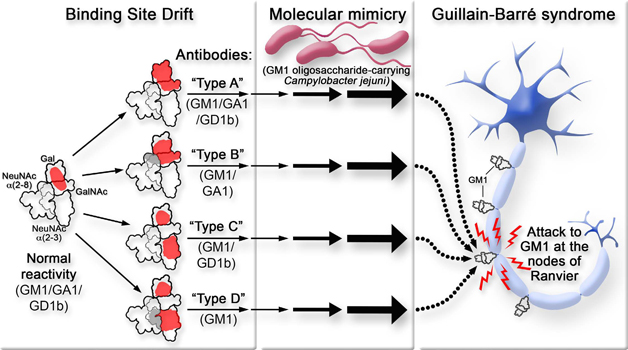Lardone RD et al. 2016, Sci Rep
Elevated titers of serum antibodies against GM1 ganglioside are associated with a variety of autoimmune neuropathies. Much evidence indicates these autoantibodies play a primary role in the disease processes, but the mechanism for their appearance is unclear. We studied the fine specificity of anti-GM1 antibodies of the IgG isotype present in sera from patients with Guillain-Barré syndrome (GBS), using thin-layer chromatogram-immunostaining of GM1, asialo-GM1 (GA1), GD1b and GM1-derivatives with small modifications on the oligosaccharide moiety. We were able to distinguish populations of antibodies with different fine specificity. Remarkably, individual patients presented only one or two of them, and different patients had different populations. This restriction in the variability of antibody populations suggests that the appearance of the anti-GM1 antibodies is a random process involving restricted populations of lymphocytes. With the origin of disease-associated anti-GM1 antibodies as a context, this finding could provide explanation for the “host susceptibility factor” observed in GBS following enteritis with GM1 oligosaccharide-carrying strains of Campylobacter jejuni.
Autores: Lardone RD, Yuki N, Irazoqui FJ, Nores GA
Artículo: Lardone RD et al, Sci Rep. 2016 Jan 28;6:19901. doi: 10.1038/srep19901.



